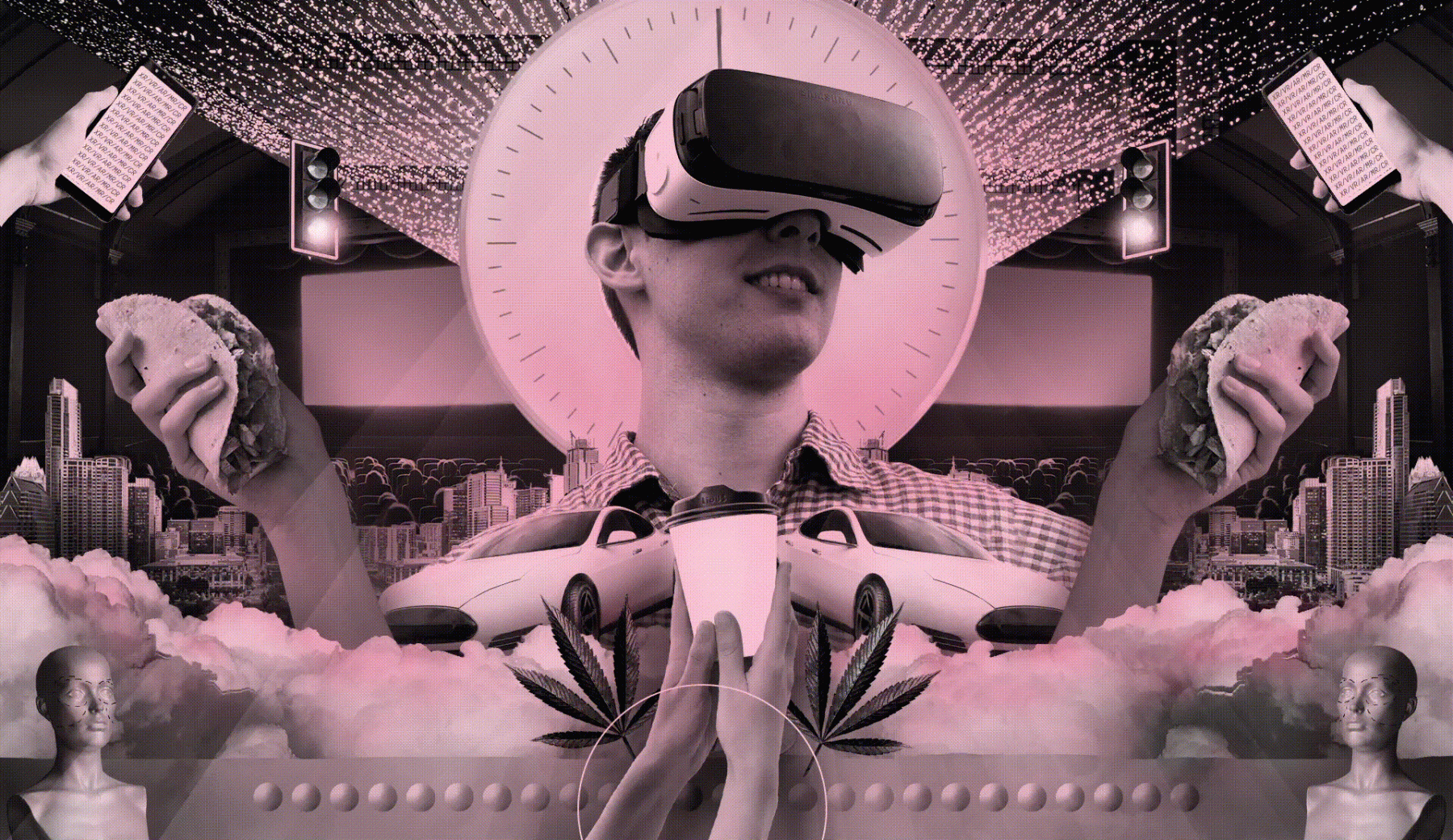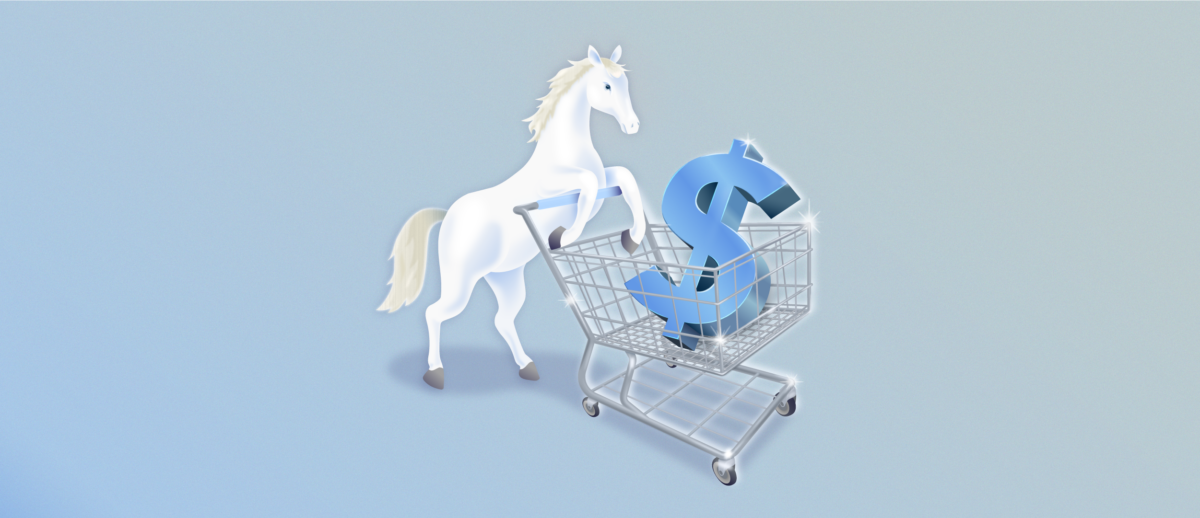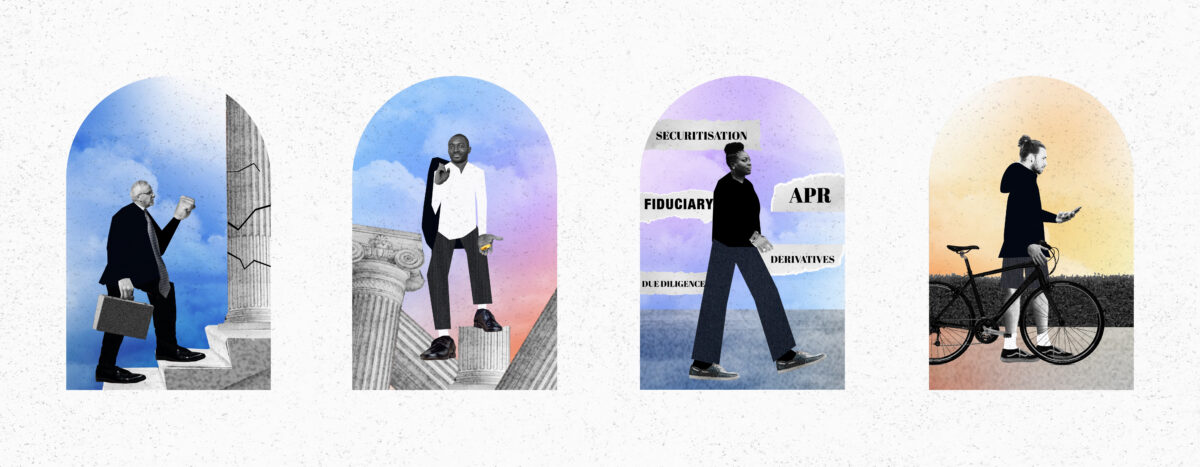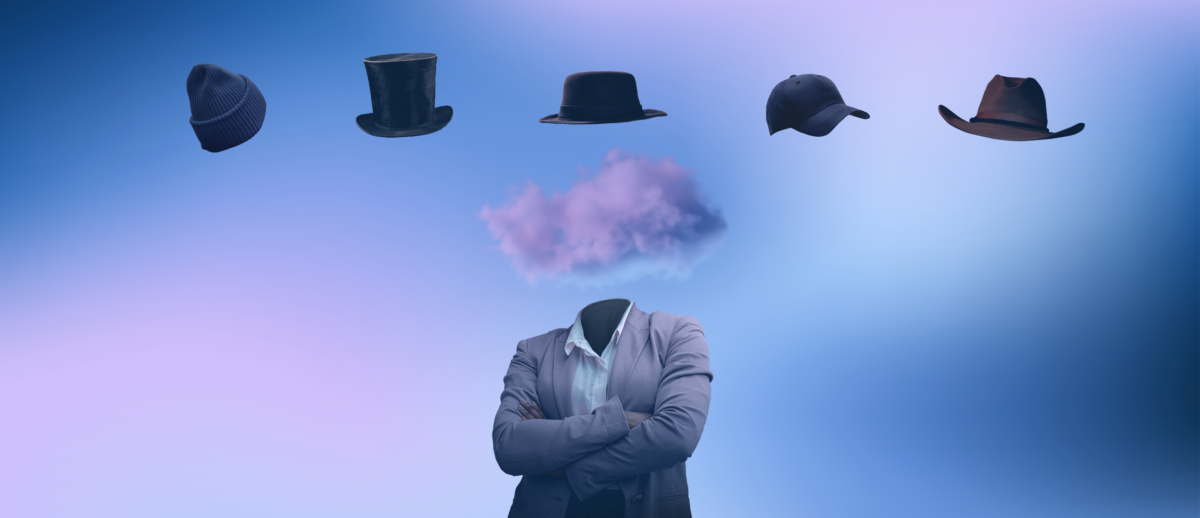It’s fitting that daylight saving time lands at 2 a.m. between Saturday night and Sunday morning of the first weekend of the nine-day (possibly longer, it’s hard to tell) interactive, film, music, convergence (and gaming? Maybe, I couldn’t tell) festival/trade show/digital installation space/wellness expo and 2020 Democratic presidential candidate cattle call that is SXSW in Austin, Texas.
Standing on the corner of Lavaca and West 2nd at 8:15 Sunday morning, groggily mourning my lost hour of sleep, I donned my SXSW badge and headed toward the convention center. Seeing the other badge-wearing zombies—some in an overflowing line for coffee at the Bumble dating app’s “Hive” activation—I braced myself, anxiously anticipating being activated upon, harangued to and, God willing, handed free breakfast tacos.
We could call the dislocation experienced after daylight saving time and during SXSW a heightened, absurdly sped-up example of the contemporary curse of being “resource rich and time scarce.” As a result of DST, we literally lose an hour, and at SXSW, we risk losing our minds as we bolt from one thing to the next, propelled by FOMO and paralyzed by the horror show of endless choices, all happening in real but ever receding time.
I certainly felt out of sorts as I continued east through the requisite band of Handmaid’s Tale ladies—no, sister, praise be to YOU—and some even darker cosplay folks who I assume had something to say about climate change. I still hadn’t found any tacos, but if I wanted some kind of scooter or e-bike to rent I was in luck. They littered the streets like Christmas trees left on the curb after New Year’s Day. The night before, I had stared dead-eyed at the endless stream of scheduled things I could possibly attend. This morning, I still had no firm plan for how to fill my hours. Courageously, I went on.
Henry David Thoreau wrote: “Read the best books first, otherwise you’ll find you do not have time.” But how to know what’s best? The truth is, one can only know if panel A is going to be mind-bending but panel B a stinker after they’ve already started. Type “AI” into the SXSW app’s search engine, and you’ll find over 50 separate events in five days—roundtables, workshops, panels, solo sessions, dual sessions, Focus15 sessions, book readings, “special events,” podcasts and lounges. Enter “cities” and “future” and you’ll get over 40.
There was only time for about six or so separate sessions a day, at most. If you chose AI-only sessions, you’d still be a handful short of seeing the total number. Same impossible math with the rest of it: blockchain, XR/VR/AR/MR/CR, autonomous things, future of work; I could go on. And that’s assuming that you were sticking to a single topic out of dozens, which, as a sophisticated generalist (obviously), I wasn’t.
No, the truth is that if Thoreau left Walden Pond to check out SXSW, he’d have an aneurysm.
Unsure, but with an urge to do something besides scooter home and hide, I decided to use the very limited commodity at issue—time—as my guiding light. I would try to attend only the events that seemed to be related to time (sort of like how my sister fills out her March Madness bracket, if time were the schools whose names sounded good to my sister).
Many of the core topics explored at SXSW—your autonomous vehicles, even your experiential storytelling and cannabusinesses—touch, in some way, on time. This first occurred to me at my first session: mindfulness and self-care in the workplace. Granted, I had only gone to this one because the siren song of “self-care” rang out to me and my taco-less stomach. But as I sat there, eyes closed, doing mindfulness with about 75 other people, I quickly abandoned focusing on my breath—as I always do when told to—and chased after my erratic thoughts.
One future byproduct of what seemed like SXSW 2019’s chief concerns—AI, autonomy and all the rest—would be more time on our hands. Mindfulness at work to avoid burnout is so in demand because we’re all looking desperately to reclaim the time lost to “just one more email.” But what if we suddenly had a lot of time? What if we didn’t have to work at all? Would we regress into the milkshake-slurping automatons from Wall-E, staring stupidly at our screens forever?
This line of thought kept going as I attended “Is America Ready for U.B.I. (universal basic income),” with longshot Democratic presidential candidate and Reddit hero Andrew Yang. Obviously, someone was going to have to pay for whatever we choose to do with the freed-up time gained from robot job takers, either the government or Jeff Bezos with a pitchfork at his neck.
At “Media and Entertainment for Autonomous Vehicles,” a new aspect of the question presented itself. The panel of designers and car industry people mused about what the design parameters around “experiences” in self-driving cars might look like. How does the mix of content and platform change depending on time of day, proximity to specific locations, personal profile or itinerary?
One guy said that what AVs really offer us is the elusive “25th hour.” Americans spend something like seven years of their lives commuting, so that’s a lot of new time gained from a single innovation, and one that we’re told is not too far in the future (by Malcolm Gladwell, no less, and I made up the seven years thing, but it’s a lot).
An idea was developing in my brain as I dodged packs of networking nerds in a ballroom at the JW Marriott: The changes in our relationship to time are just going to accelerate in the coming years, and “time” is going to mean something much different to our grandchildren than it does to us.
And no, I hadn’t taken a detour to the cannabusiness fair, where former House Speaker John Boehner held court—no joke—in his new role as lobbyist and evangelist for Big Pot (I stick to CBD these days, FYI, and I found it in every conceivable ingestible or smear-on-your-body-and-absorbable form, for human and canine, at the wellness expo).
Our future selves are going to gain even more time—measured potentially in decades—if the folks at “Leveraging Our Own Biology for Longevity” are to be believed. These weren’t weirdly tan freaks who take 500 vitamins a day. They looked like the chirpy, millennial disrupters all over Austin this week (I’m looking at you, Pete Buttigieg and AOC). Some combination of stem-cell therapy plus injections for your face plus continued good nutrition plus all of the other aspects of the self-care regimen we’re increasingly obsessed with is going to make us live longer and change the way we look at aging and, yes, time.
My own stable sense of time unraveled as the days went on and the sessions mounted: “Moment, Momentum, Movement”; “Jailbreak the Simulation”; “Sci-Fi CEOs: How Fictional Futures Influence Tech”; “Telling Urgent Stories With Interactive Maps”; “Ocean Research Through Blockchain …” (That last one was the result of going in the wrong room, but every bit a happy accident: Imagine a mix of marine biologists and blockchain enthusiasts—talk about convergence!)
As I headed home that night, I looked absent-mindedly at my phone. Work emails and Twitter blared as the car lurched through Austin’s horrific traffic. I felt a twinge of carsickness (my stomach finally full of free tacos) and hurriedly put my phone away to stare out the window at the horizon. I ruminated on the changing contours of time (hey, anything to not vom out the window of an Uber). Defining the 25th hour will be a big thing in the coming years, I decided. I headed to bed an hour earlier than usual that night, just trying to reclaim my lost 24th.






